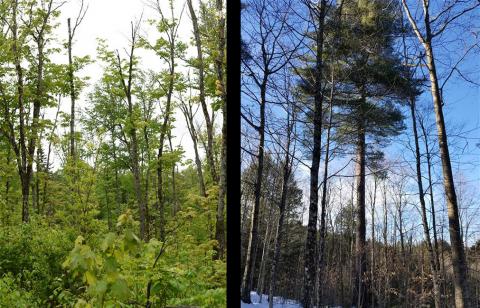Modelling Rehabilitative Silviculture in Northern New England's Poor-Quality Stands (Webinar)

On September 29th, New Hampshire Agricultural Experiment Station’s post-doctoral researcher Dr. Jessica Charpentier and research assistant professor of forest management John Gunn discussed the results of recent research. The research uses the US Forest Service’s Forest Vegetation Simulator to evaluate the potential response of forest stands to rehabilitative silvicultural prescriptions in terms of outcomes such as total value, the ratio of sawlog to low-grade volume, tons of carbon stored, and habitat suitability for several songbird species. The work was supported by the National Fish and Wildlife Foundation’s New England Forest and Rivers Fund, UNH Cooperative Extension, and the New Hampshire Agricultural Experiment Station.
SAF Continuing Education Units (CEUs) are available for this webinar (1.5). To qualify, view the video and complete the questions at the end. You will receive a certificate of attendance and national SAF will be notified. No partial credits awarded.
Background Information:
Large areas of the Northern Forest need rehabilitation to regain the potential to provide a wide range of ecosystem services (including quality timber) on a sustainable basis. A recent study by UNH’s Gunn, Ducey, and Belair published in Forest Ecology and Management (2019) demonstrated that nearly 40% of the forestland in northern New England (Maine, New Hampshire, and Vermont) is in an understocked condition when species desirability and tree form are considered. New Hampshire’s forests are in better shape than the region as a whole, but still about one-third of the state’s forest is made up of poor-quality stands that could be considered as being in a degraded condition. Silvicultural practices that restore forests from poor-quality conditions brought about by past harvesting, pests, and natural disturbances are needed on nearly 1.5 million acres of New Hampshire’s timberland. These silvicultural practices are often pre-commercial or marginally economically viable to implement, which often limits the willingness of landowners, foresters, and loggers to carry out treatments that have long-term benefits.
Resources:

